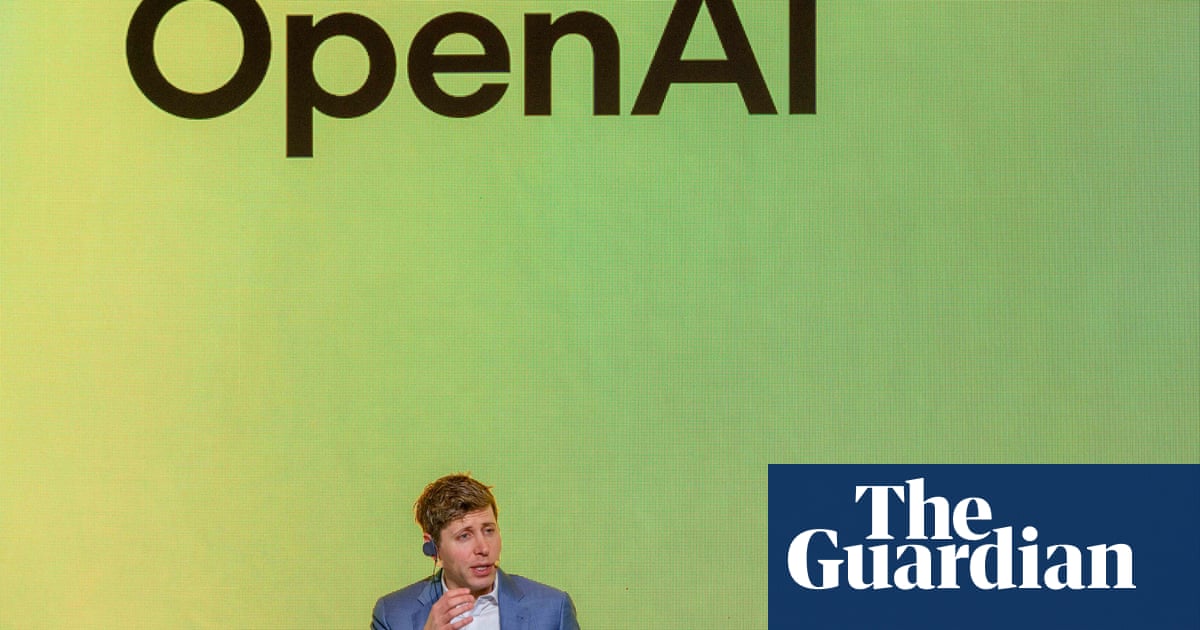On 30 November 2022, OpenAI CEOSam Altmantweeted the following, characteristically reserving the use of capital letters for his product’s name: “today we launched ChatGPT. try talking with it here: chat.openai.com”. In a reply to himself immediately below, he added: “language interfaces are going to be a big deal, i think”.
If Altman was aiming for understatement, he succeeded. ChatGPT became the fastest web service to hit 1 million users, but more than that, it fired the starting gun on the AI wars currently consuming big tech. Everything is about to change beyond recognition, we keep being told, though no one can agree on whether that will be for good or ill.
This moment is just one of many skilfully captured in Wall Street Journal reporter Keach Hagey’s biography of Altman, who, like his company, was then virtually unknown outside of the industry.He is a confounding figure throughout the book, which charts his childhood, troubled family life, his first failed startup Loopt, his time running the startup incubator Y Combinator, and the founding of OpenAI.
Altman, short, slight, Jewish and gay, appears not to fit the typical mould of the tech bro. He is known for writing long, earnest essays about the future of humankind, and his reputation was as more of an arch-networker and money-raiser than an introverted coder in a hoodie.
OpenAI, too, was supposed to be different from other tech giants: it was set up as a not-for-profit, committed by its charter to work collaboratively to create AI for humanity’s benefit, and made its code publicly available. Altman would own no shares in it.
He could commit to this, as he said in interviews, because he was already rich – his net worth is said to be around $1.5bn (£1.13bn) – as a result of his previous investments. It was also made possible because of his hyper-connectedness: as Hagey tells it, Altman met his software engineer husband Oliver Mulherin in the hot tub of PayPal and Palantir co-founder Peter Thiel at 3am, when Altman, 29, was already a CEO, and Mulherin was a 21-year-old student.
Thiel was a significant mentor to Altman, but not nearly so central to the story of OpenAI as another notorious Silicon Valley figure – Elon Musk. The Tesla and SpaceX owner was an initial co-founder and major donor to the not-for-profit version of OpenAI, even supplying its office space in its early years.
That relationship has soured into mutual antipathy – Musk is bothsuing OpenAIand offering (somewhat insincerely) tobuy it– as Altman radically altered the company’s course. First, its commitment to releasing code publicly was ditched. Then, struggling to raise funds, it launched a for-profit subsidiary. Soon, both its staff and board worried the vision of AI for humanity was being lost amid a rush to create widely used and lucrative products.
This leads to the book’s most dramatic sections, describing how OpenAI’s not-for-profit board attempted anaudacious ousting of Altmanas CEO, only for more than 700 of the company’s 770 engineers to threaten to resign if he was not reinstated. Within five days, Altman was back, more powerful than ever.
OpenAI has been toying with becoming a purely private company. And Altman turns out to be less of an anomaly in Silicon Valley than he once seemed. Like its other titans, he seems to bepreppingfor a potential doomsday scenario, with ranch land and remote properties. He is set to take stock in OpenAI after all. He even appears tosharePeter Thiel’s supposed interest in the potential fortransfusions of young bloodto slow down ageing.
The Optimist serves to remind us that however unprecedented the consequences of AI models might be, the story of their development is a profoundly human one. Altman is the great enigma at its core, seemingly acting with the best of intentions, but also regularly accused of being a skilled and devious manipulator.
For students of the lives of big tech’s other founders, a puzzling question remains: in a world of 8 billion human beings, why do the stories of the people wreaking such huge change in our world end up sounding so eerily alike?
